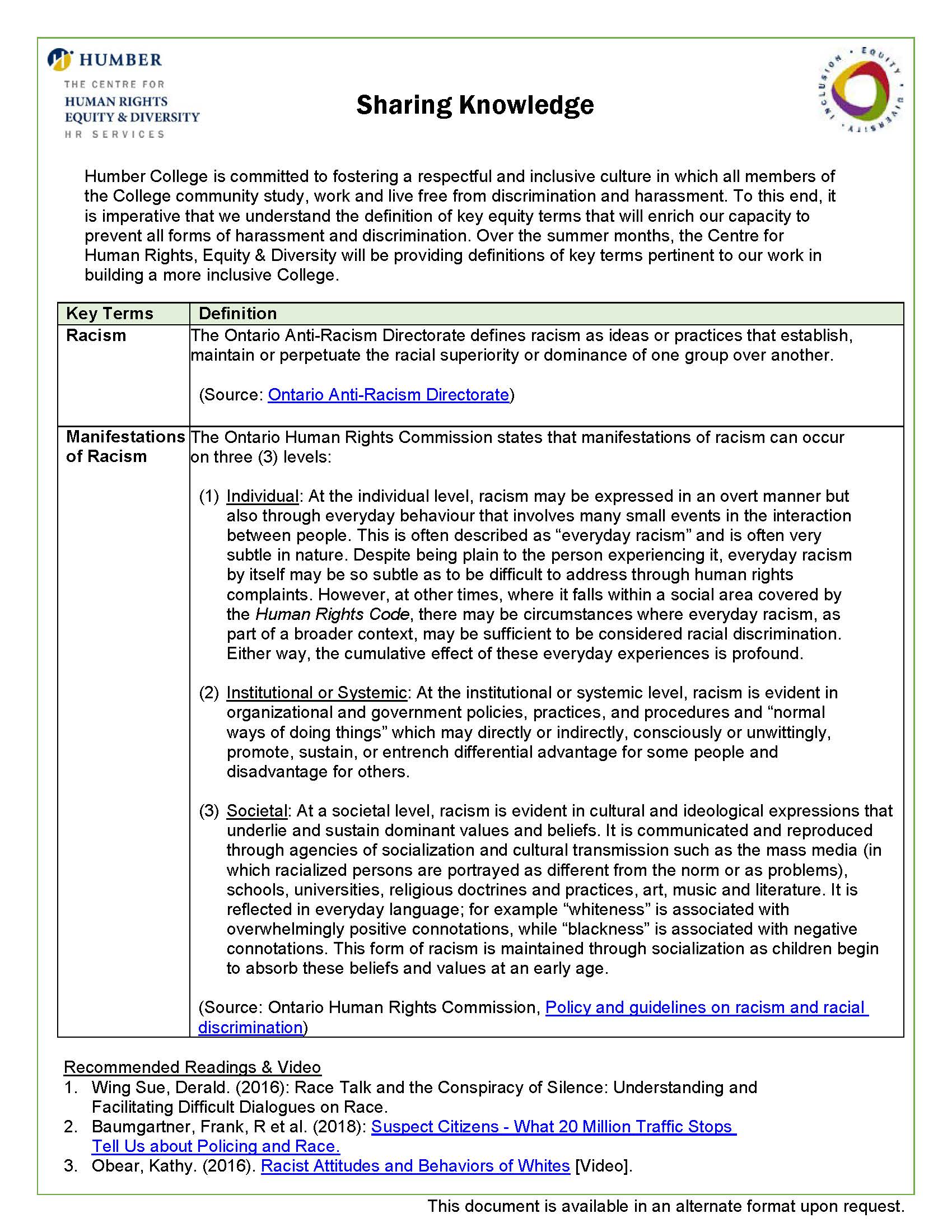Sharing Knowledge
Humber College is committed to fostering a respectful and inclusive culture in which all members of the College community study, work and live free from discrimination and harassment. To this end, it is imperative that we understand the definition of key equity terms that will enrich our capacity to prevent all forms of harassment and discrimination. Over the summer months, the Centre for Human Rights, Equity & Diversity will be providing definitions of key terms pertinent to our work in building a more inclusive College.
|
Key Terms |
Definition |
|
Racism |
The Ontario Anti-Racism Directorate defines racism as ideas or practices that establish, maintain or perpetuate the racial superiority or dominance of one group over another. (Source: Ontario Anti-Racism Directorate |
|
Manifestations of Racism |
The Ontario Human Rights Commission states that manifestations of racism can occur on three (3) levels:
(Source: Ontario Human Rights Commission, Policy and guidelines on racism and racial discrimination |
|
Recommended Readings & Video
|
|

